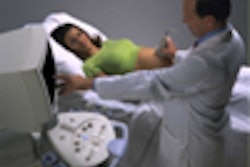The use of ultrasound, particularly in ob/gyn settings, has become de rigueur in the clinical community. In response, manufacturers have sought to enhance existing technology in a bid to improve image quality and enhance market share.
Many vendors have added 3-D imaging capability to their conventional 2-D scanners. But only two companies -- Seoul-based ultrasound developer Medison and its Austrian subsidiary, Kretztechnik -- distribute dedicated 3-D units that offer users real-time capability.
Now GE Medical Systems wants to play in real-time. On July 16, the Waukesha WI-based firm signed an agreement with Medison to acquire that firm's 65.4% share in Kretz. Medison will receive 12 euros ($10.83 U.S.) in cash for each Kretz share it owns. The contract is contingent on GE's being able to purchase the remaining 34.6% percent of Kretz owned by public shareholders, for which GE has offered 17 euros ($15.34) per share in cash.
If both parts of the deal go through, Kretz will become a wholly owned subsidiary of GE, and GE will become the new keeper of real-time 3-D technology. GE expects the sale to close by mid-September.
Bringing Kretz into the GE fold is attractive for a number of reasons, according to Omar Ishrak, the firm's vice president and general manager for ultrasound. Although the company’s Logiq scanner does offer 3-D capability, its doesn't include real-time 3-D; so adding Kretz’s Voluson line will round out GE’s offerings.
Kretz leads the market in real-time 3-D technology, has an established brand name that is well recognized among clinicians, and has built a European distribution channel that GE plans to use to market not only 3-D but also lower-end ultrasound products.
"Kretz is the only company that has developed true 4-D technology that is capable of visualizing moving structures in multiple planes at one time," Ishrak said. "The company also enjoys considerable credibility in the clinical community -- its brand name is well known. GE anticipates stronger distribution of its value products in Europe as a result of Kretz’s strong distribution channels, which will complement GE’s existing channels in Europe."
GE has yet to determine how it will brand Voluson, although it has a history of retaining the brand names of the companies it acquires, Ishrak said. The company also expects to continue to sell Kretz’s product line, which also includes SonoAce and Combison products.
GE will allow Medison to continue selling Voluson products in Japan, Korea, and China, where the Korean firm will act as GE’s distributor. Outside of these three countries, Medison will not be able to sell Voluson products or products based on Voluson’s real-time technology.
Founded in 1985, Medison was the first company to develop diagnostic ultrasound equipment in Korea. It boasts annual sales of $240 million. It acquired Kretztechnik of Zipf, Austria, in 1996. Kretz employs 440 people worldwide and operates subsidiaries in Germany, France, Switzerland, and Spain. In the past year Kretz recorded sales of approximately $110 million.
How will the deal affect Medison? The company remains committed to 3-D technology, according to marketing manager Jeffery Johnson, and will also continue to sell its SonoAce line. Medison plans to release two new mid-range products this year, and expects to develop its own high-end system over the next three years, Johnson said.
Potential applications for real-time 3-D technology include further advances in ob/gyn imaging, rendering the fetal face more clearly, tracking biopsy needles in interventional ultrasound, imaging the prostate during brachytherapy seed implantation procedures, and visualizing tumor vascularity, Ishrak said. GE plans to focus its R&D efforts primarily on ob/gyn and urology applications for the technology, he added.
Despite the clinical promise of real-time 3-D imaging, GE concedes that there are barriers to its growth. While the technology produces dramatic images, some doctors say it doesn't offer any information that isn’t already available with conventional 2-D imaging. Their skepticism, and the cost differential -- 3-D scanners can cost up to three times as much as 2-D -- have kept 3-D from gaining a critical mass in the marketplace.
"The mindset among clinicians is that 3-D ultrasound is difficult to use and expensive," Ishrak said. "But we intend to demonstrate, through our distribution channels, that the technology is in fact convenient and beneficial. We think Kretz technology, when distributed through our channels, will truly make 3-D ultrasound into a day-to-day tool for sonographers."
By Kate Madden YeeAuntMinnie.com contributing writer
August 15, 2001
Related Reading
Report forecasts strong growth in 3-D market, April 24, 2001
GE beefs up 3-D position with EchoTech buy, April 13, 2001
3-D ultrasound excels at detecting ovarian cancer, March 13, 2001
Abbott Northwestern uses 3-D ultrasound on prostate cancer, December 29, 2000
Copyright © 2001 AuntMinnie.com




















